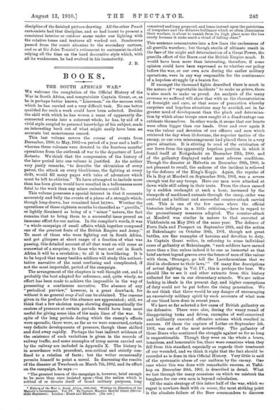ART.
THE ART OF LINLEY SAMBOURNE.
"HUMOUR is so common in England, and consequently so little considered, that instead of two or three comic papers in each great city (as with us), this nation only requires one comic paper, and even so it demands that the heroic and the senti- mental and the businesslike shall stand foremost in the page." It is indeed easy to imagine such an extract from a book on England by a German student of our ways. In Punch, one might say, the Comic Spirit operating in the affairs of the day reveals her outlines rather warily. And so we find ourselves to-day mourning the loss of one of the chief artists of that institution, yet unable to say truthfully that any spring of our humour dies with him. Something snapped when that genial untethered sprite of Bohemia, Phil May, flitted from us; and the City man became a thinner and less human entity when Charles Keene no more turned his direct whimsical eyes upon him and his umbrella. Linley Sambourne's name suggests no such strain of rich and curious English humour as is recalled by a mention of his two predecessors. With Leech and Tenniel we can easily remember our favourite cartoons ; with Sambonrne it is difficult to think of one. Rather, we review innumerable graceful designs, in which such obdurate things as battle- ships, white elephants, British lions, underground railways, sea-serpents, top-hats, Buckingham Palace, the Clerk of the Weather, and the German Eagle were wonderfully united and rhythmically arranged. He took up a class of subject that had previously been perfunctorily handled and gave to it a new existence. It was not "the heroic" which Tenniel, the last of a famous line of historical painters, stamped in the grand manner on the late nineteenth century. It had little in it of the epic. Compare Sambourne's cartoon on the passing of Meredith with any of Tenniel's memorial designs, and, despite its gracefulness and fluency, it has a look of irrelevance. But his work was, within its limits, good symbolism,—inventive, dignified, and carried to a logical end rare in English art. It was unlike anything that had come before it, and it leaves no disciples. In his illustrations to Charles Kingsley's "Water Babies" he allowed his fancy a fuller freedom, and there achieved a sustained delicacy of idea which will probably make them live beyond any of his now popular work. The covers of the Pall Mall Magazine and other journals perpetuate some of his best designs. I have not mentioned as a claim on posterity the well-IrnOwn and much-admired accuracy of detail in his presentments ; for in these days of photography they can have no historical value, and their artistic quality is hardly increased by their accuracy.
Unlike any other notable draughtsman of his notable paper, Sambourne never developed. For good or bad, his conception of drawing remained the same through all these forty years. The Pre-Raphaelites, Burne-Jones and the stained-glass draughtsmen, and the French realists influenced him as little as did Aubvey Beardsley, Mr. Dana Gibson, and Mr. Augustus John. In his early drawings the line is heavier and coarser, the shadowed eyes more regularly conventional ; in the later work the design is more sinuous, the hatching of the background not so purposeless, and the whole effect appears more practised. But the lighting is equally arbitrary; a foreground figure may be presented in outline and a subsidiary figure in the same light all in shadow. A great many of his cartoons hardly stand a second scrutiny. Why an artist with an authentic talent who gained public approval at the first stroke should not have made a more definite effect on the imagination of the public seems a puzzle, but the reason can probably be found in the fact that all through his career he happened to escape the iholesome
discipline of the finished picture-drawing. All the other Punch cartoonists had that discipline, and so had learnt to present a consistent interior or outdoor scene under one lighting with the relative tones and textures all worked out. Sambourne passed from the comic almanac to the secondary cartoon, and so at Sir John Tenniel's retirement to cartoonist-in-chief, relying all the time on the hard decorative style which, with all its weaknesses, he bad evolved in his immaturity.
J. B.







































 Previous page
Previous page